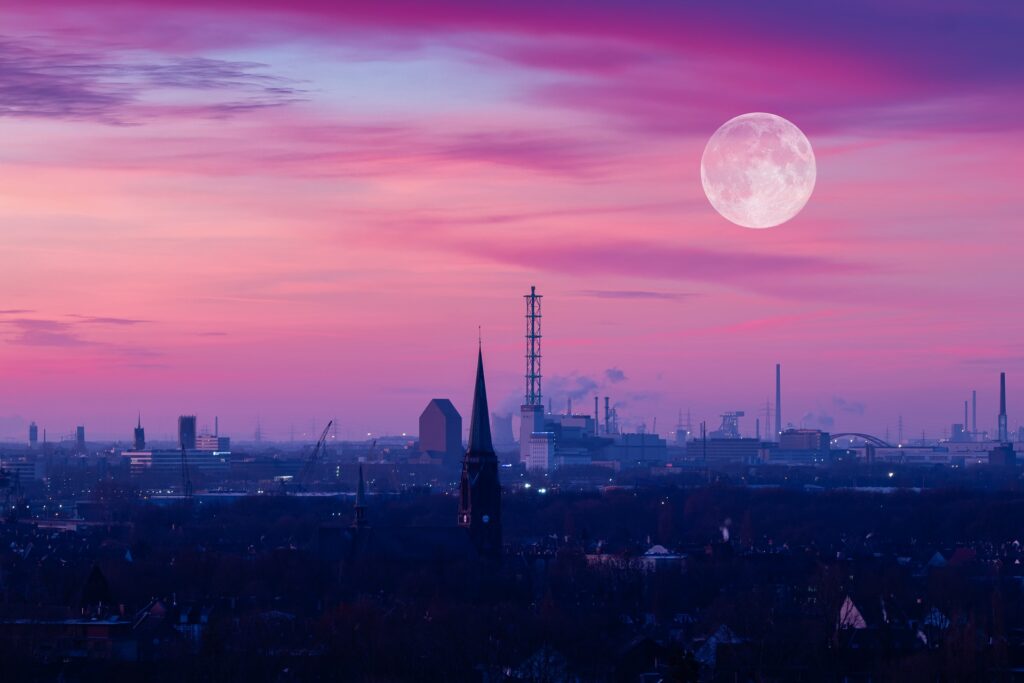Although it is named the “pink moon,” April’s full moon will not shine pink tonight. Nevertheless, the bright golden orb still promises a breathtaking sight. The lunar event will be visible to moon observers from Wednesday night, and its peak is expected at 12:34 a.m. ET early Thursday morning.
Dr. Noah Petro, chief of NASA’s planetary geology, geophysics, and geochemistry lab, clarified that the April full moon will appear similar to other full moons at first glance. However, each full moon presents a unique opportunity to admire the moon’s beauty and observe its changing phases.
“The April full Moon, at first glance, will look like other full Moons,” said Petro, Each one, however, “presents a special opportunity to see a beautiful Moon and start looking at the Moon as it goes through its phases.
Dr. Petro encouraged people to use binoculars or telescopes to observe the moon more closely and appreciate its rock formations’ various colors and compositions.
“I encourage people to dust off their binoculars or telescopes to look closely at the Moon, try to see the different colors (the light and dark regions), and recognize that those differences reflect different rock compositions.”
According to EarthSky, full moons are visible to observers in both the Northern and Southern hemispheres, as they remain in the full moon phase for about 12 hours before and after their peak. However, the appearance of fullness may not be noticeably different to the naked eye the day before or after the peak.
For the best view of the pink moon, Dr. Petro suggests finding a location with minimal light pollution and an unobstructed view of the sky. In addition, viewers may be able to spot Venus and Mars, as they will be in proximity to the moon in the night sky.
“When people look at the Moon, I want them to think of not just of it as a nearby neighbor in space, but of the Moon being like the eighth continent of the Earth,” said Petro.
The Pink Moon Marks the Arrival of Spring
As the spring weather brings an abundance of blooming flowers and trees, the pink moon symbolizes the season. The name of the pink moon is derived from a hot pink wildflower called Phlox subulata, also known as creeping phlox, moss phlox, or moss pink. The wildflower grows in a thick mat of vibrant foliage and is native to eastern North America. Its blooming also attracts butterflies, which are considered a sign of the arrival of spring, according to the Farmers’ Almanac.
The pink moon is also known by other names such as the budding moon, flower moon, and moon of the big leaves, among others. These names were coined by various Native American tribes as a tribute to the flourishing foliage of the season, according to a guide compiled at Western Washington University.
Moreover, this year’s April full moon coincides with the first full moon of spring, which is also known as the Paschal full moon. This lunar event holds great significance for those who celebrate Easter, as the date of the religious observance falls on the Sunday after the Paschal moon appears in the night sky.
Other Expected Full Moons of 2023
In addition to the pink moon in April, there are nine more full moons to look forward to this year. Two of them, occurring in August, will be supermoons, meaning they will appear larger in the sky due to their proximity to Earth.
Here is the list of the remaining full moons of 2023, as provided by the Farmers’ Almanac:
• May 5: Flower moon
• June 3: Strawberry moon
• July 3: Buck moon
• August 1: Sturgeon moon
• August 30: Blue moon
• September 29: Harvest moon
• October 28: Hunter’s moon
• November 27: Beaver moon
• December 26: Cold moon

